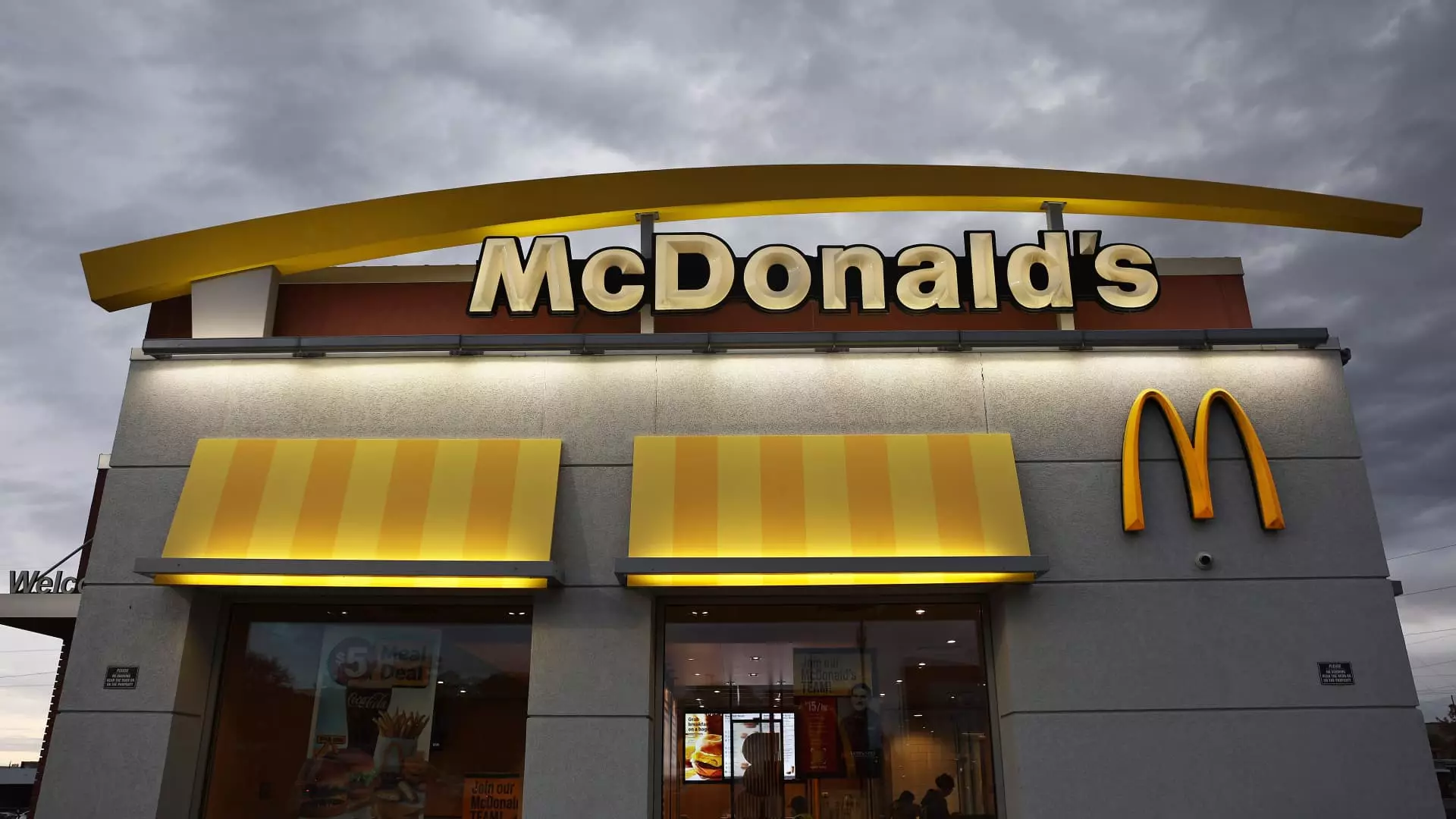In a recent financial disclosure, McDonald’s has unveiled the hurdles it faced during the last quarter, revealing disappointing revenue metrics significantly impacted by health concerns. The fast-food giant reported a total revenue of $6.39 billion, marginally short of the $6.44 billion that Wall Street anticipated. This deviation was primarily a result of diminished customer patronage in the U.S. following a severe E. coli outbreak linked to its widely popular Quarter Pounder burgers, forcing the company to rethink its supply chain strategies.
The timing of the outbreak could not have been worse for McDonald’s as it coincided with the crucial periods of the quarter. The Centers for Disease Control and Prevention (CDC) promptly identified the likely source of the outbreak as slivered onions supplied to McDonald’s, causing a ripple effect on customer traffic. The aftermath saw a notable decline in sales, especially in the regions most affected, despite a general industry trend toward increased consumption. Although McDonald’s has since switched suppliers for this key ingredient, the damage to its reputation was already evident, with a 1.4% decline in same-store sales in North America—far worse than the anticipated 0.6%.
Digging deeper into McDonald’s financial results, the company posted a fourth-quarter net income of $2.02 billion, translating to earnings of $2.80 per share—a slight decrease from last year’s figures. When adjusted for certain non-recurring expenditures like the sale of the South Korean business and costs associated with the purchase of its Israeli franchise, earnings were pegged at $2.83 per share. Despite these adjustments, the stagnant year-on-year sales figures underline a concerning trend, as net sales remained virtually unchanged from the previous year.
In a bid to recapture the attention of budget-conscious consumers, McDonald’s implemented promotional strategies, including the introduction of a $5 combo meal that had previously garnered favorable responses in the third quarter. This try to improve sales reflects the company’s awareness of its customer demographic’s shifting preferences toward value-oriented offerings. While promotional deals can certainly drive initial traction, analysts speculate they may not yield sustainable growth if customers do not accompany discounted items with additional regular-priced menu choices.
In contrast to the dismal performance in the U.S., McDonald’s international sales held steady. Both international divisions reported positive same-store sales growth, enhancing the overall picture for the company. Specifically, the international developmental licensed markets—which include booming areas like the Middle East and Japan—recorded an impressive 4.1% growth in same-store sales. Meanwhile, the larger umbrella of international operated markets saw a modest 0.1% increase. This suggests a potential resilience in global markets, offering McDonald’s a considerable opportunity for expansion and diversification away from its struggling domestic operations.
As McDonald’s navigates through these turbulent waters marked by health-related incidents and a shifting consumer landscape, the company must act swiftly to restore its brand trust in the U.S. and effectively communicate its health and safety measures. The juxtaposition of its performance both domestically and internationally provides a stark reminder of the complexities faced in today’s fast-food sector. The company’s future strategies will need to focus not only on promoting value meals but also on reinforcing the safety and quality of its food supply chain while capitalizing on the positive momentum seen in its international markets. Addressing these challenges will not only position McDonald’s to reclaim its market share but will also define its trajectory for growth in the fast-paced food service industry.

